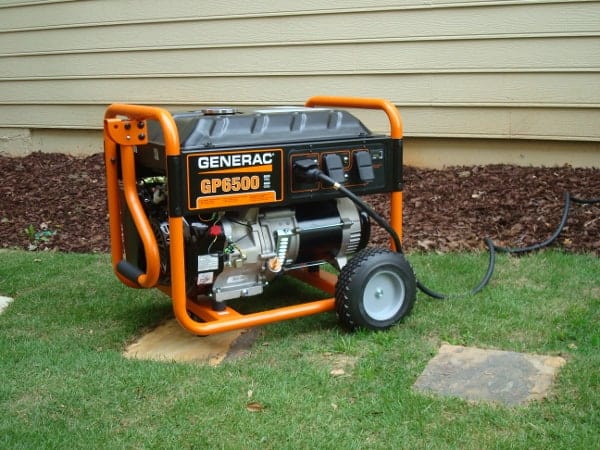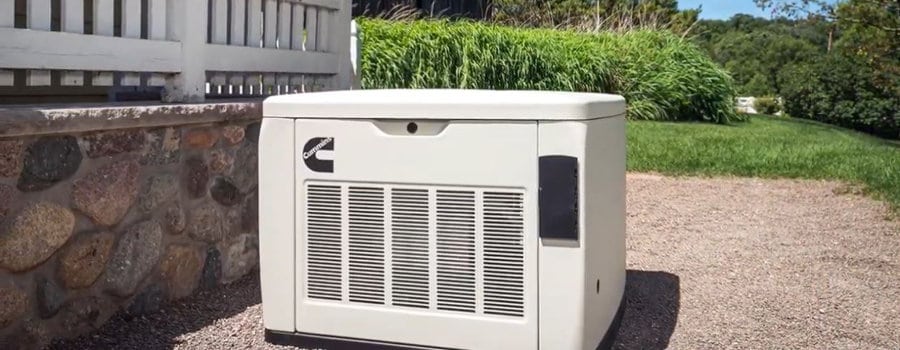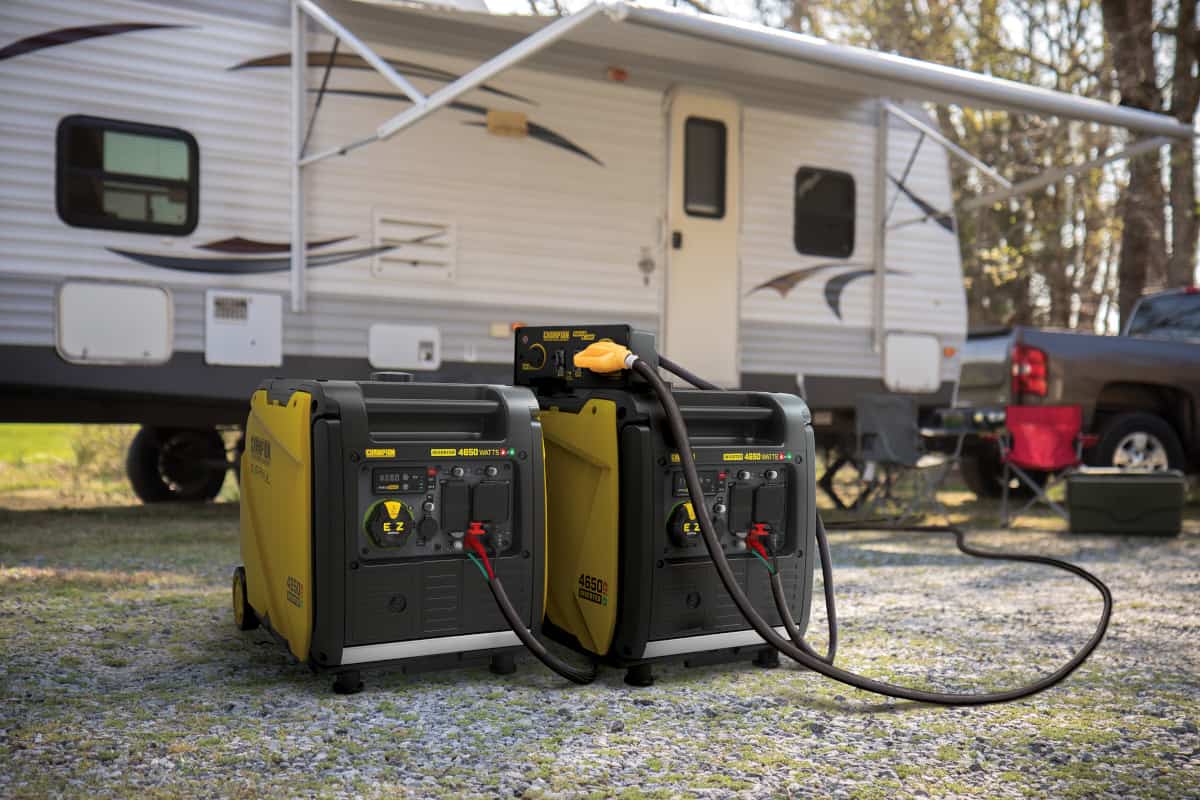Understand the difference between a generator’s ability to start a motor and the power it’s rated to supply continuously.
Generators Have Two Ratings: Starting Watts and Running Watts
All generators, from permanently installed home standby generators for backup power to portable generators on job sites, have two very important specifications that all generator users should understand.
- Running Watts: Power the generator can supply all the time. Also called rated watts or continuous watts.
- Starting Watts: Power the generator can supply for a few moments to start a motor. Also called Surge Watts.
Both specifications are given in watts or kilowatts. For example, a manufacturer might specify that a small portable generator can supply a maximum of 2000 watts, but it is rated for 1600 continuous watts. Maximum watts in this case refer to the surge watts or starting watts. Continuous watts refer to running watts.
The distinction between starting vs running watts makes a difference when choosing a generator and especially when electric motors make up part of the total electrical load the generator supplies.
Starting Watts and Electric Motors
Don’t Forget to Include Starting Watts When Sizing a New Home Standby Generator
When an electric motor turns on, a momentary inrush of electric current starts the motor turning. For a fraction of a second, the motor has a very low resistance which allows a very high current to flow. As current begins to flow, the magnetic fields form and push and pull on each other and force the motor to start turning.
Electrical Power is usually expressed in watts and is a function of the voltage (volts) and current (amperes or amps). Watts = Volts x Amps = Watts (P = V x I.) As the motor speed increases, the current flowing decreases until the motor reaches full speed and the current remains steady.
The inrush or surge of current starts very high and tapers off quickly as the motor reaches full speed. During this short startup period, the average current is three to five times higher than at full speed under load.
A motor that requires 5 amps at full load may require 15 amperes to start. 5A x 120V = 600 Watts. 15A x 120V = 1800 Watts.
Generator Starting Watts (Surge Watts)
Generac’s IQ2000: Rated for 2000 Starting Watts and 1600 Running Watts
As current increases, the heat created by the flow of current also increases. Without a device to prevent an overload, a generator could burn out or catch fire. A circuit breaker rated close to the continuous power capacity—running watts—prevents overloads but still allows higher levels of current—surge watts—to flow for a very short period. This allows the generator to start motors within the limits of the generator.
The generator’s main circuit breaker controls the flow of current through all the generator’s receptacles. Each receptacle may also have a circuit breaker. If the power drawn rises above the circuit breaker’s rating but does not exceed the breaker’s surge rating, the current will continue to flow. However, if the current remains high for too long, the breaker trips.
The main circuit breaker on the generator is the primary safety against overloading the generator and preventing failure
Example: The average 1/3-horsepower motor uses 830 running watts. To start, it needs approximately 2500 watts or about three times the running watts.
Generator Selection
A backup generator from Norwall PowerSystems will keep your family and home safe during power outages.
When choosing a generator for purchase or determining what loads a generator can power, take both specifications into consideration. Have a look at our Power Calculator and our Sizing Guides. The sizing guides outline a method for determining the generator capacity required for any purpose. The Power Calculator provides a table of running watts and starting watts of common tools and appliances for reference. Remember that appliances and tools may vary—check each one for actual power requirements.
First adds up the running watts of all the appliances or tools the generator will run. You will need a generator that can supply the total running watts―the continuous power rating― all the time. Next, find the appliance or tool with the highest starting watts and add the starting watts to the running watts. This is maximum surge watts or starting watts the generator must supply.
Purchase a generator that can supply the maximum watts required for a few seconds and the continuous running watts the rest of the time.
Remember that small generators may have the capacity to run a load, but not enough reserve to supply the starting watts required.
For example, a window air conditioner draws 6 amperes at 120 volts while running. 6 amps x 120 volts = 720 watts, but it needs at least 2160 watts to start. A generator rated for 1600 running watts and 2000 starting watts probably won’t have the power to start the air conditioner. It may work for a short time but using this generator to run the air conditioner may significantly shorten the life of the generator.
Choose a generator with enough power to both start and run the load required. A good rule of thumb places the load on the generator at about 90 percent of generator’s rated continuous capacity or the running watts. The generator will run cooler and last longer.


















